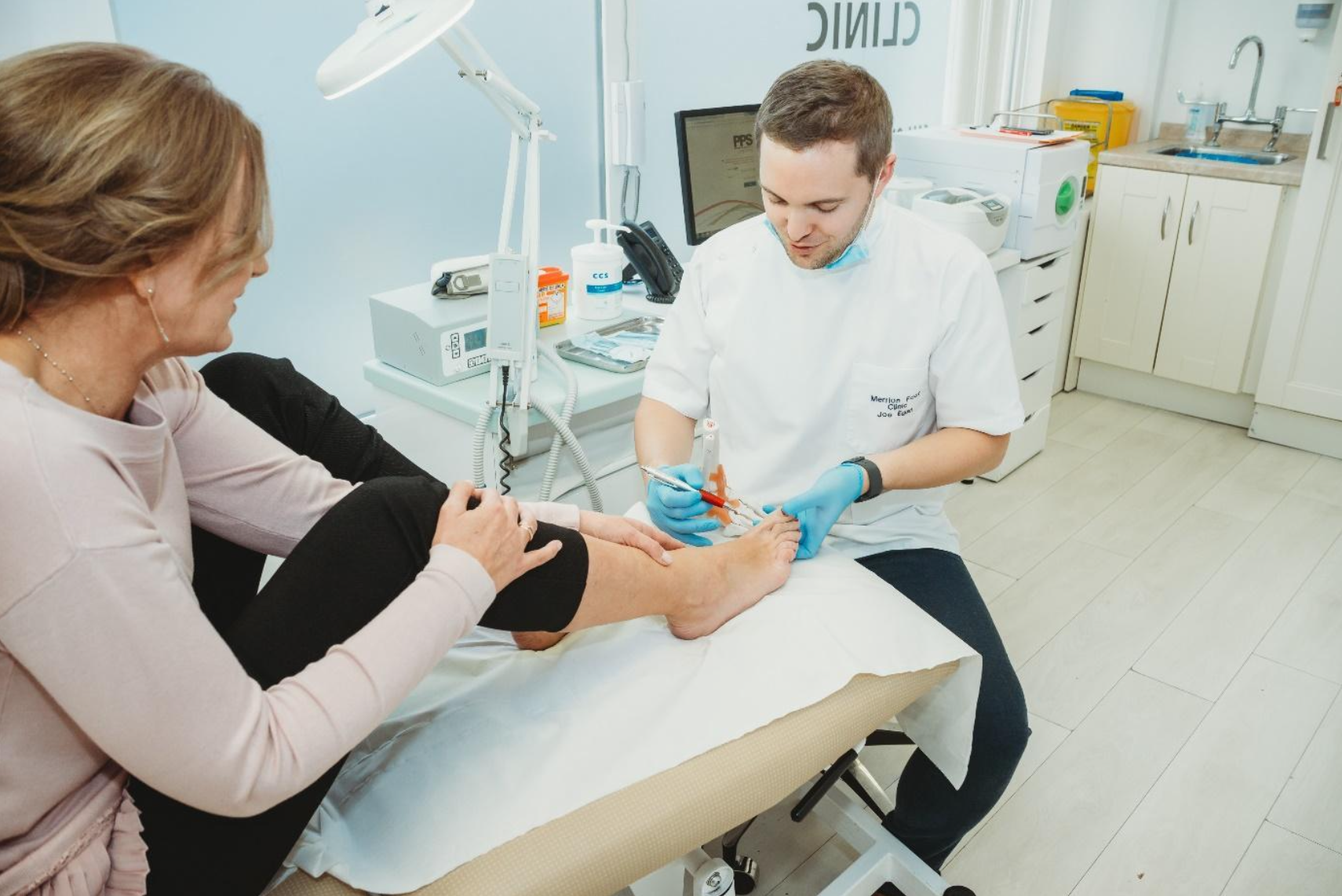Plantar Fasciitis
WHAT IS PLANTAR FASCIITIS?
Plantar Fasciitis is a swelling of a tissue called the plantar fascia. The plantar fascia is a
web-like connective tissue that crosses your foot arch; it stabilises, protects, and supports the arch when walking. The plantar fascia inserts onto the bottom of your heel bone, which is why people with plantar fasciitis experience heel pain.
Common symptoms you may experience include, sharp/shooting heel pain or feeling a stone or bruise pain at the bottom of your heel. Some people may have heel spurs, however this doesn’t mean that you will have heel pain or plantar fasciitis, and it also doesn’t mean your heel pain won't go away.
WHo is prone to Plantar fasciitis?
The people at highest risk of developing heel pain from plantar fasciitis are those:
- Aged between 40 and 60 years old
- Who participant in high-impact activities such as long-distance running and ballet
- Who have a flat foot, high foot arch
- Who have a high BMI, which leads to extra stress on your heel
- With occupations that require prolonged standing or walking, especially on hard surfaces as in teaching and construction
- And require immediate plantar heel pain treatment
What are some other causes of Plantar heel pain?
There are many potential causes of plantar heel pain that may not be due to plantar fasciitis.
PLANTAR FASCIA TEAR
Plantar fascia tears are acute injuries where all, or part, of the plantar fascia tears. Plantar fascia tears present as a sudden onset of high heel pain, which is then accompanied by bruises in the arch of the foot and swelling. Plantar fascial tears can occur in anyone, but are more common in those participating in high-impact activities.
PLANTAR FIBROMA
Plantar fibromas are small, benign nodules within the plantar fascia near the foot arch or heel. Once irritated or hit by force, fibromas can cause sharp plantar heel pain and arch pain when compressed.
CALCANEAL STRESS FRACTURE
Calcaneal stress fractures occur for 2 main reasons. The first, is for those with impaired bone health, such as osteoporosis. The second, is in those who undertake high-impact activities. Calcaneal stress fractures may feel like a deep dull constant ache, that also occurs at night time.
FAT PAD INJURY
The heel contains a specialised type of fat pad and connective tissues that absorb shocks and protect the heel bone when walking. Some individuals may experience a breakdown of these connective tissues, possibly leading to heel pain.
NERVE COMPRESSION
There are several nerves the enter the plantar heel and may cause plantar heel pain when irritated.. People with nerve compression may experience electric shocks, tingling or radiating heel pain to the toes or up the leg.
If you are experiencing plantar heel pain, and have some of these symptoms, seek treatment at a plantar fasciitis clinic near you.
what are the best plantar heel pain treatment options?
There are several plantar heel pain treatment options. Yet, podiatry experts recommend starting with the low-risk treatment options first to manage your heel pain.
1. ADDRESS THE COMMON CAUSES OF PLANTAR FASCIITIS
Address the potiental causes of heel spurs and get treatment, as necessary:
2. MODIFY ACTIVITY LEVELS
For active individuals, modifying activity levels and increasing rest periods will help the plantar fascia recover. Go for low-impact or non-weight-bearing exercises like swimming to improve heel pain symptoms.
3. REDUCE WEIGHT
For those with a high BMI, weight reduction may improve heel pain symptoms and also prevent a recurrence. You may also like to seek proper dietary treatment from a dietician, and a health professional to recommend appropriate weight reduction exercises for heel pain relief.
4. CHANGE YOUR FOOTWEAR
Improper footwear (e.g., with a flat heel, little cushioning, or stiff soles) can further aggravate heel pain. Before seeking treatment, try to look for footwear with suitable fastening, mild heel lift, and some cushioning to reduce heel pain.
For further advice on the most appropriate footwear for plantar heel pain, go to the nearest plantar fasciitis clinic.
5. DO SOME STRETCHES
Perform plantar fascia and calf stretches to decrease heel pains after long periods of standing and rest.
6. DO CALF STRENGTHENING EXERCISE
Try on a simple calf strengthening exercises that will build muscle strength and reduce heel pain.
7. APPLY Tape to your plantar Fascia
One of the medical treatments that plantar fasciitis clinics can teach you is to place a strapping tape on your foot. This tape will decrease the stretch of the fascia, and reduce your heel pain.
8. ORTHOTICS
An effective plantar heel treatment for your heel pain is orthotics. When orthotics are used
for plantar fasciitis, the aim is to reduce pressure on the heel, and prevent your arch from lowering.
9. SHOCKWAVE THERAPY
Your podiatrist may recommend shockwave therapy, which is an excellent, non-surgical treatment for chronic plantar fasciitis.
10. STEROID INJECTIONS
Lastly, steriod injections are recommended treatment for short-term relief of heel pain symptoms and plantar fasciitis. Only podiatrists endorsed to prescribe scheduled medicines can administer steroid injections at plantar fasciitis clinics.
How Can A Podiatrist Help?
Your first steps in the morning can be quite painful if you have plantar fasciitis or heel spurs.
For effective treatment, seek expert heel spurs treatment from a podiatrist at a plantar fasciitis clinic near me, MyFeet Foot & Ankle Clinic.
MyFeet Foot & Ankle Clinic is a plantar fasciitis clinic that has plantar fasciitis and heel spur treatment experts. We pride ourselves on the excellent plantar heel treatment that we provide. Get in touch with us, pick an appointment, and experience high-quality plantar pain management.
What DO I Bring to My Appointment:
- Current footwear including sports shoes & everyday shoes
- Loose trousers so you can comfortably do the assessments
What's Next?
Simply book an appointment using our online booking system and we'll take care of the rest.



